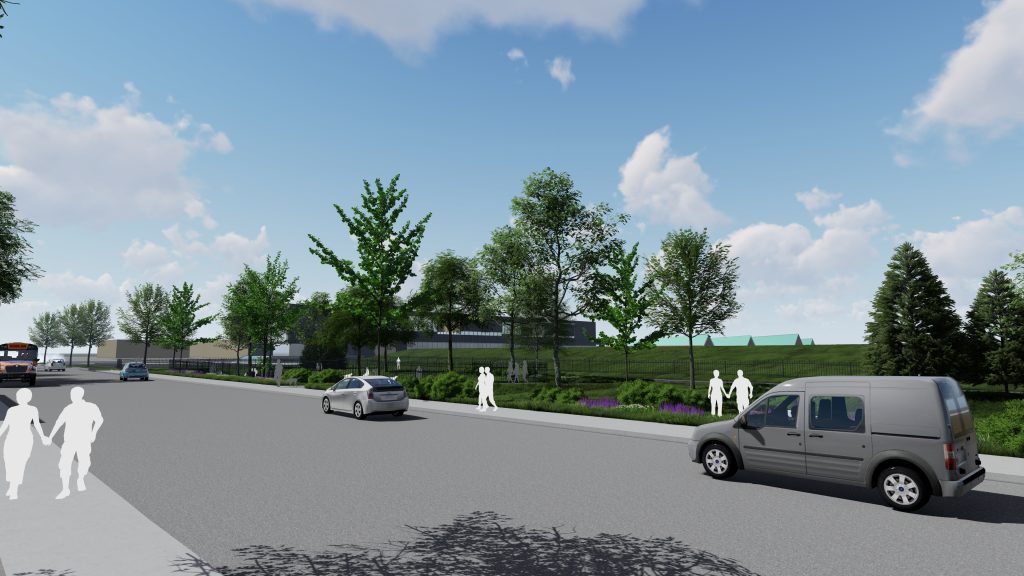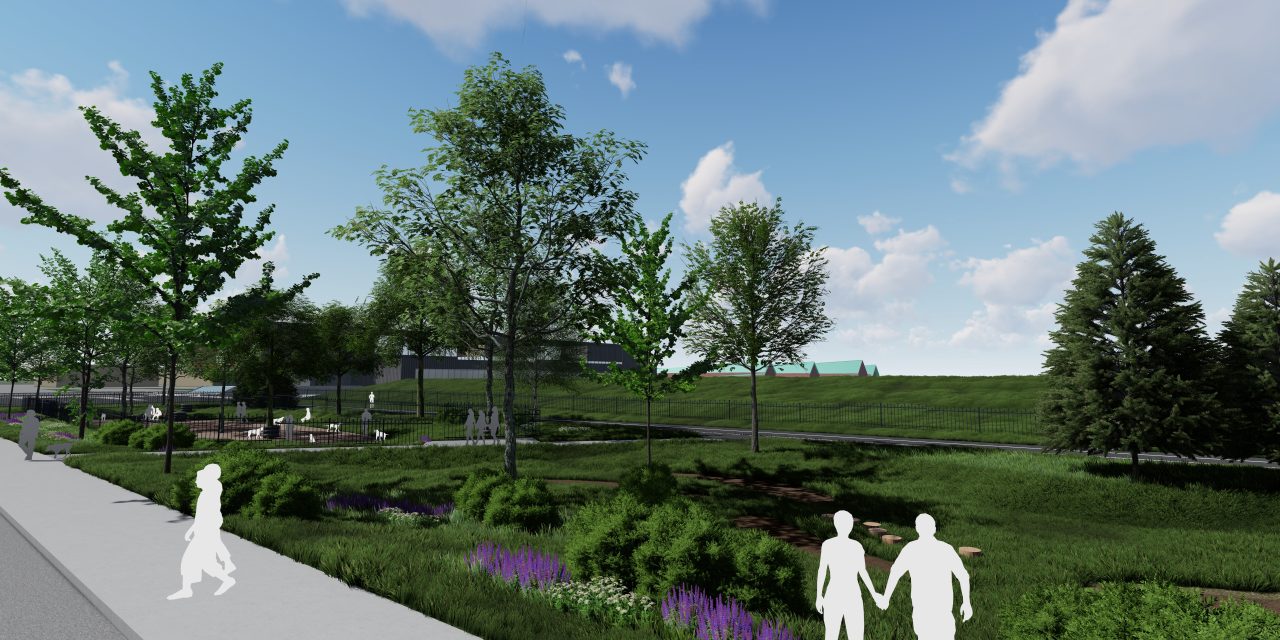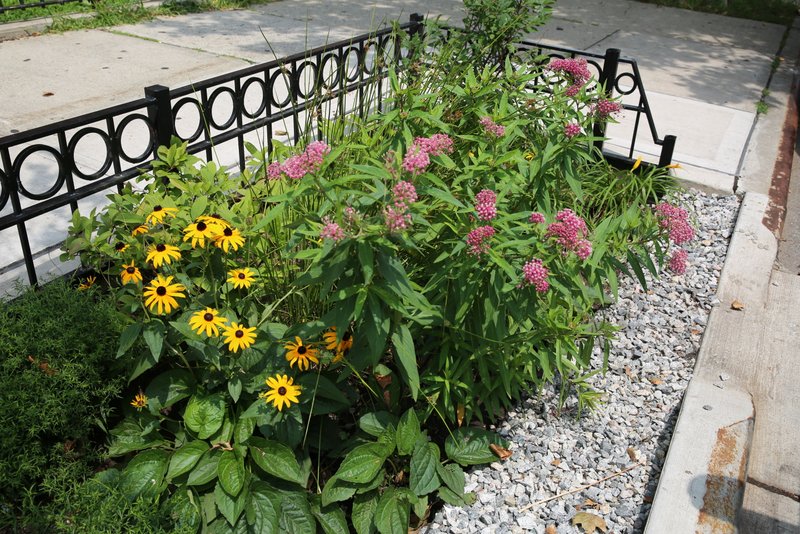Straddling the banks of the culturally and economically vital St. Lawrence River, Montreal officials are taking a new tack to address the city’s longstanding issues with combined sewer overflows (CSOs). City agencies are midway through a plan to construct more than 30 “sponge parks” — public spaces designed to maximize stormwater infiltration and retention using green infrastructure, thereby mitigating burdens on Montreal’s storm drains and aging collection systems — by the end of 2025.
In May, construction began on the largest sponge park designed as part of the citywide project. The 4,300-m2 (152,000-ft2) park, located in the riverside Verdun neighborhood in southeast Montreal, will boast a total retention capacity of approximately 1,067,000 L (282,000 gal) when complete, city officials estimate.
CSOs are a provincewide problem for Quebec. In 2018, the most recent year for which data is available, Quebec led Canada in total annual CSO discharge volumes with 54.2 million m3 (1.9 billion ft3). Controlling CSOs has been a priority for Quebec’s government, which is subsidizing most of Montreal’s sponge park campaign through its 2030 Plan for a Green Economy.
“At a time when the whole world is confronted with the consequences of climate change, we have a responsibility to implement concrete measures to adapt to this new reality,” said Montreal Mayor Valérie Plante in a statement about the Verdun park. “Sponge infrastructure is part of the solution, as it reduces the risk of flooding in vulnerable areas by capturing as much rainwater as possible, rather than directing it into the sewer system. We are stepping up our efforts to adapt the territory and protect the quality of life in all of the city’s neighborhoods to meet the needs of today and future generations.”
Balancing Recreation With Resilience
The site that will become Verdun’s newest sponge park already is a sanctuary of green space within densely developed Montreal. The empty lawn, located on land adjacent to the city’s Atwater drinking water treatment facility between two of Verdun’s busiest avenues, often attracts picnickers and recreationalists. However, by itself, the flat, low-lying patch of grass is insufficient to curtail flash flooding in the neighborhood during heavy downpours. By transforming the lawn into a sponge park, developers intend to preserve and enhance the property’s recreational value while also maximizing stormwater infiltration by adding more functional landscaping.

Key elements of the redesign include a dog park and a bike path. Additionally, crews will divide the existing lawn into two distinct sections: open areas for congregation and densely vegetated fields that focus on stormwater infiltration. The plan calls for installing the dog park at the highest point on the property — surrounded by a grass-covered ditch intended to pool and redirect runoff to lower areas — to avoid impacts from flooding. Developers will install a similar ditch along the new bike path to guide water toward the vegetated spaces, sparing the park’s recreational elements from storm impacts. Additionally, the park will feature a series of drinking fountains. Unlike typical drinking fountains, which recirculate undrunk water back into the municipal drinking water system, these fountains will discharge excess water directly into the park’s ditches to help moisten the soil and preserve infiltration capabilities.
Along the perimeter sidewalks of the new park, a combined 305 m2 (3,280 ft2) of strategically placed vegetated pits featuring native trees will separate the park from adjacent roadways. The roadways themselves will undergo regrading and resurfacing, positioning them on a slight slope toward the park. Crews also will build passages from the roads, beneath the sidewalks, and into the park to allow the flow of rainwater directly into the ditches, vegetated pits, and bioretention areas, thereby discouraging roadway flooding. Each element of the park’s design follows a plan to direct rainwater along a predetermined path toward a sump pump, where excess water not infiltrated into the ground enters the local storm drain system at controlled rates.
The total expected cost of the park — slightly less than CAD $2.5 million — will be funded entirely by the province under Quebec’s 2030 Plan for a Green Economy. Completion is anticipated in fall 2025.
“I’m delighted to see Montreal’s largest sponge park come to life in Verdun,” said Marie-Andrée Mauger, Verdun Borough Mayor, in a release. “This exemplary project, which combines the useful with the pleasurable, will reduce the risk of water accumulating in the streets of this highly vulnerable area during heavy rainfalls. At a time of climate change, the city continues to take advantage of every opportunity to improve its territory’s ability to adapt.”
Toward a Spongier Montreal
Montreal’s sponge park campaign is a fixture of the city’s broader action plan to improve flood resilience in the coming years, which the city announced in May during its annual Montreal Climate Summit.
The plan prescribes three components to be carried out by Montreal’s Water Department, Housing Department, Urban Planning and Mobility Department, and other municipal agencies. First, it calls for enhanced measures to empower Montreal citizens and property owners to build small-scale flood adaptations, by methods such as bolstering existing grant programs and establishing new technical assistance programs. Second, the plan urges a review of municipal regulations and existing environmental roadmaps — such as Montreal’s 2050 Land Use and Mobility Plan — to emphasize flood mitigation. Finally, it advocates large-scale investment in “sponge infrastructure,” including the new parks as well as approximately 400 new permeable sidewalks throughout the city. Within the next decade, these investments will surpass CAD $140 million, according to the plan.
“We can no longer repeat the same thing over and over, and at every opportunity, our parks are becoming sponge parks; our streets are welcoming new safe cycling links; our underground infrastructures are better adapted to heavy rainfall; and our new neighborhoods are maximizing the number of dwellings to facilitate the use of public transit,” Plante said. “Every effort is being made to adapt the territory, and this plan will enable us to intensify our efforts throughout Montreal.”
Top image courtesy of City of Montreal

ABOUT THE AUTHOR
Justin Jacques is editor of Stormwater Report and a staff member of the Water Environment Federation (WEF). In addition to writing for WEF’s online publications, he also contributes to Water Environment & Technology magazine. Contact him at jjacques@wef.org.






